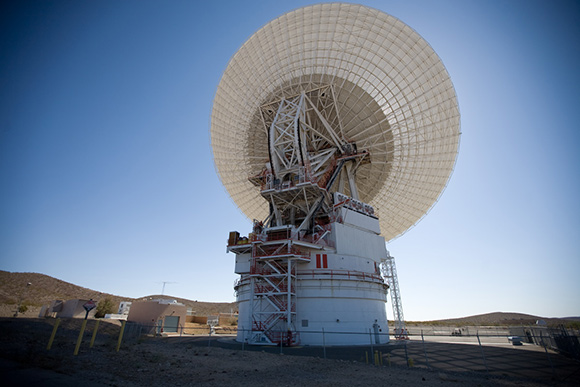Radio Reservations
 [Image: Photo by Dave Bullock for Wired; these images are only visually related to this post].
[Image: Photo by Dave Bullock for Wired; these images are only visually related to this post].Flipping through back issues of New Scientist, in a late spring cleaning of the BLDGBLOG office, I came across two plans for radio astronomy parks that I thought worth mentioning here.
On the one hand, there's the Square Kilometer Array (SKA). The Array, which will consist of "thousands of antennas with a total collecting area of 1 square kilometre," requires a "radio-quiet reserve." That is, it can only function properly given "little or no interference from radio signals of human origin."
There are two sites now in competition to host it: South Africa's northern Karoo region and someplace in the Australian outback. The South African site refers to itself as a Radio Astronomy Reserve; the Reserve, if protected by South Africa's so-called Astronomy Geographic Advantage Act, could include as much as 12 million hectares of landed radio silence (close to 31 million acres).
 [Image: Photo by Dave Bullock for Wired].
[Image: Photo by Dave Bullock for Wired].On the other hand, there are plans for a radio astronomy reserve that would not even be with us here on Earth: Paris-based radio astronomer Claudio Maccone "is calling on the United Nations to recognise a 1820-kilometre-diameter zone on the moon's far side as the 'Protected Antipode Circle'. A crater called Daedalus within this area would be suitable for a future radio-astronomy base," Maccone suggests – implying that "the moon's far side will one day be a haven for radio telescopes, free from the electronic chatter of Earth and the many satellites now orbiting it."
Briefly, I wonder if this future lunar radio base should be open to an architectural design competition. And what of the site in South Africa – could we invent some sort of new architectural typology here: the radio astronomer's hut, complete with sleeping quarters, skylights, and stacks of back-up harddrives?
Both terrestrial and otherwise, these "optimal radio environments," as New Scientist describes them, would exist within interesting overlaps of land use policies, preservation statutes, and massively coordinated techno-financial investment networks – complete with quite sizable maintenance and security bills.
How strange it would be, then, to be an armed guard standing there alone at night in the darkness with your back to a machine, its towering dish pointed upward, a mere silhouette in the sky, tracking galaxial magnetism and the slow evolution of stars – till the quiet whir of recalibration tilts that hulking mass a fraction of a degree back down toward the horizon. It's the only sound you hear for the next two hours.
The radio astronomy reserve as a new site for experimental forms of human solitude.





Comments are moderated.
If it's not spam, it will appear here shortly!
#1
#2
Actually, that "quiet whir" would be going all the time. Radio telescopes, like optical telescopes, need to rotate at the same speed as the earth (15 degrees / hour) in order to track an object in the sky.
Post a Comment